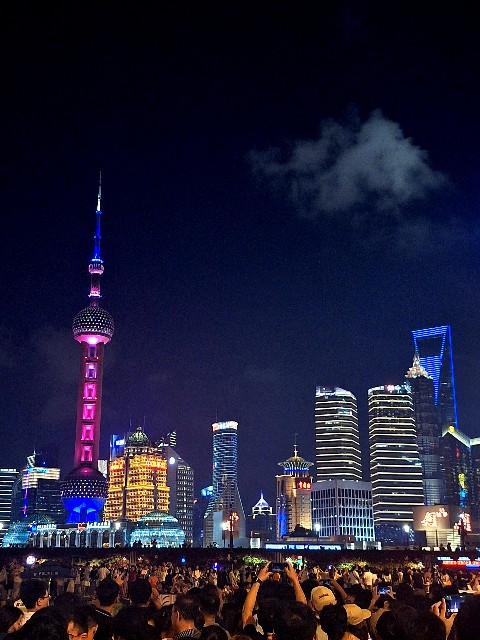
In recent years, amid reports of China’s economic slowdown and changing political circumstances, rumors suggesting Shanghai’s rapid decline and abandonment have been spreading. In particular, a recently released YouTube video has attracted significant attention, warning about Shanghai’s deterioration. This video shows shocking footage and commentary claiming that Shanghai’s commercial districts have become shuttered streets, people have left, and the entire city is turning into a ghost town.
The Impact of YouTube Videos and the Spread of Rumors
The video titled “Why has Shanghai, one of the world’s leading cities, turned into ruins in just a few months?” has caused a significant reaction among viewers interested in geography and political economics. The video cites factors such as the withdrawal of international companies, increasing unemployment rates, and the consequences of excessive urban development beginning to surface.
However, from the comments on the video, opinions about Shanghai’s abandonment seem divided. While some voices lament Shanghai’s deterioration (or, unfortunately, some insensitive voices even seem to celebrate it), there are travelers who have actually visited and report experiencing vibrant activity. Questions remain about the credibility of this information, with a considerable number of people suggesting it’s inappropriate to develop theories without seeing the actual local situation firsthand.
On-Site Report: Is Shanghai Really Turning into Ruins?
As I recently had the opportunity to visit Shanghai myself, I investigated the local situation to verify the credibility of this information. To conclude upfront, the image of a “ruined” city as depicted in the YouTube video seems to be a one-sided exaggeration.

The area around East Nanjing Road remains as vibrant as ever, comparable to busy shopping districts anywhere in the world
First, walking through Shanghai’s central areas like the Bund and East Nanjing Road, I found them bustling with tourists and locals, with the illuminated skyline of buildings still intact. While some shops have closed in certain areas, this appears to be a temporary phenomenon due to redevelopment or store relocations, and the city as a whole is not turning into ruins. I also visited Shanghai in late 2019, just before the COVID-19 pandemic, and compared to then, the number of tourists seems to have increased significantly this time. In particular, the scenic spots around the Bund were crowded with many domestic tourists, creating a festival-like atmosphere. Although there weren’t many foreign tourists, perhaps due to visa rule changes, the influx of tourists from across China seems even stronger than it was a few years ago.

Has it actually become more crowded? A scenic spot overlooking Pudong’s skyscrapers
Furthermore, when talking to locals, while there were certainly voices of concern about economic difficulties and strict policies in Shanghai, many people were carrying on with their daily lives normally, and there was no impression that the entire city had become a “ghost town.” As some comments suggested, the term “ruins” seems somewhat excessive.
What Created These Rumors?
So why has the “Shanghai ruins theory” spread so widely? The following factors may be behind it:
Excessive Urban Development and Concerns about a Bubble Burst
Urban development in China has progressed rapidly in recent years, but as a reaction, there has been an increase in empty buildings and unused infrastructure in some areas. This phenomenon may be fueling rumors of “abandonment.”
Political Tensions and Withdrawal of Foreign Companies
It is indeed true that many foreign companies have begun to withdraw from the Chinese market due to the Chinese government’s authoritarian policies and deteriorating international relations. This has led to a decrease in economic activity in urban areas including Shanghai, resulting in an increase in vacant offices.
Fake News and Excessive Reporting
Some media outlets and social networks try to attract attention by emphasizing urban decline and economic crises. Images that make the situation appear worse than it actually is, or intentionally edited news, are likely to be the source of these rumors.
The Current State of Shanghai for Travelers
From a traveler’s perspective, Shanghai remains a vibrant tourist destination with many attractions. The night view of the Bund, the historical buildings of Yu Garden, modern shopping malls, and other uniquely Shanghai attractions remain intact. Tourist spots are still crowded with many people, and commercial facilities continue to operate as usual.
However, there are points that travelers should be aware of. It is true that China’s overall economic situation has worsened, and some areas have seen store closures, indicating that Shanghai’s former economic momentum is being lost. In particular, outside of tourist areas, there are noticeably more shuttered stores, and there were moments where economic impacts could be glimpsed.
Conclusion: Where Does the Truth Lie?
While the rumor that “Shanghai is turning into ruins” may not represent the drastic collapse depicted in the video, it is true that there are some signs of this in certain areas. However, from my experience visiting the city, Shanghai is still a major metropolis where many people gather, and its appeal as a center for tourism and business remains very much intact. I felt that in today’s information society, it is increasingly important to verify things with your own eyes, rather than relying solely on videos and rumors.
When visiting as a traveler, it is important not to be misled by information and to assess the actual local situation. And on that basis, why not enjoy Shanghai from your own perspective?
![[Risk Check] Is China Eastern Airlines Dangerous? Why Is It So Incredibly Cheap? The Shocking Truth Behind the Low Fares and What to Watch Out For](https://en.kosupatravel.com/wp-content/uploads/2025/04/20241014195554.jpg)




